Musakhan – Palestinian sumac onion flatbread with chicken
By many considered the national dish of Palestine
Dear reader,
The weekly In the kitchen despatch with new recipes is usually reserved for paying subscribers, but I wanted to share this edition with all of you. I was going to send it out over the weekend, but life got in the way, so here it is now.
While this edition has been planned since the summer, it’s impossible to pass on the recipe for what many consider the Palestinian national dish without acknowledging the current situation. Like so many others, I’ve followed the unfolding of events since October 7 with horror. First with the terror attack, then the incessant bombardment of Gaza. I’ve joined the calls for ceasefire – there’s simply no justification for the scale and indiscriminate nature of Israel’s response, which appears to go way beyond its originally stated intentions. But more than anything, I stand in solidarity with the millions of civilians caught in cross-fire they’ve played no part in creating – many of them have even actively worked to end it. Most acutely the Palestinians who have nowhere safe to go and have seen an incomprehensible number of children murdered, but also the many in Israel who have been living in fear of rockets, terror attacks and kidnappings. And not just since October 7, but since long before then.
I’m fortunate enough to never have lived anywhere that was at war. I’m not going to pretend to imagine what they’re going through. But I know that many of them will – perhaps not yet, but in the future – find solace in their food culture. Once families again have access to food and feel safe enough to gather, or have found a new home as refugees, they’ll be making the dishes they love the most. The ones that always have brought them together. The ones that brings back memories of good times and lost one. And I’m pretty sure for many Palestinians, musakhan will be one of those dishes.
Vidar
Considered the national dish by many, musakhan is among the dearest and most traditional of dishes in the Palestinian kitchen. Like so much of Middle Eastern food, it exists elsewhere too, but nowhere with the same significance as in Palestine. Indeed, a Syrian cookbook I own mentions how the dish was brought into the local cuisine by Palestinian refugees after 1948.
So what is musakhan?
Musakhan is often described as a chicken dish, but while chicken is crucial, it’s sumac and olive oil that gives the dish its unique signature.
Historically, musakhan was served towards the end of the year, shortly after the olive harvest. Why? Because making the sumac onions requires copious amounts of fruity olive oil. Only the best olive oil from the first press would do. This makes musakhan a masterclass in how olive oil can be a substantial ingredient in its own right, not just a vehicle for sautéing another.
The combination of onion and sumac is well known, but it works even better with onions that have been cooked in fruity olive oil until sweet and slightly caramelised. The resulting sweet and sour flavour, amplified by copious amounts of fruity olive oil, is simply irresistible when spread on flatbread and grilled.
A few tips for making musakhan
If it’s not clear already, make sure to use a good quality olive oil. A fruity extra virgin olive oil is best. Some may jump at both the quantity and the use of extra virgin for cooking, but this is actually quite common in this part of the world (and perfectly safe – extra virgin olive oil is one of the best oils for cooking). I personally use extra virgin olive oil for nearly all of my cooking.
Make sure to cook the onions for long enough that they’re sweet, soft and slightly caramelised – and keep the heat low enough that they don’t burn. If it looks like your pan is getting a little too hot, add a splash of water. It’ll quickly evaporate, but lowers the temperature of your pan and keeps your onions from burning.
Palestinians apparently use a type of taboon bread that is especially made for this, slightly higher at the edges than in the middle, but you can use any soft and fairly thin flatbread here. A thin version of lavash is perfect, but pita is also fine (feel free to split them, so you have two thin pieces rather than one thick). Don’t skip the last step of placing the flatbreads under the broiler. It makes all the difference! I could eat those breads on their own.
As for the chicken, it can be prepared in a myriad of ways. Most use a whole chicken, but as a household of two, I opt for chicken legs. Some boil the chicken first, then grill it. Others braise it in a pan. Many prefer the oven. Some marinate the chicken with spices, others are happy with just salt. My personal preference is to cover it with a spice mix and roast it. It’s easiest and, in my view, yields the best flavour.
I’ve never had the chance to visit Palestine myself, but have based my version of musakhan on a number of cookbook authors with Palestinian background, including Sami Tamimi, Reem Kassis and Joudie Kalla. For more Palestinian cookbook tips, have a look at this roundup by Sami Tamimi on Instagram.
I hope you’ll make it – this is simply too good to miss. A simple salad alongside goes a long way, but feel free to start the meal with a few mezes, if you’re making more of an occasion out of it.
Dinner | Palestine | 2 servings
Ingredients
Chicken
2 Tbsp olive oil (I use a mild extra virgin)
1 tsp sumac
½ tsp ground cumin
¼ tsp ground allspice
a pinch of ground cinnamon
2 chicken legs (with skin and bone), or skin-on breast or ½ chicken
salt and pepper
Sumac onion flatbreads
5 Tbsp (75 ml/⅓ cup) fruity extra virgin olive oil
3 medium red onions, finely chopped
2 Tbsp sumac
2–4 lavash, pita bread, wheat tortillas or similar
salt
Garnish (optional)
1 Tbsp fruity extra virgin olive oil
2 Tbsp pine nuts
a small handful of parsley leaves
1–2 tsp sumac
How I make it (quick version)
Season chicken with the spices and roast at 220°C (430°F) until golden.
Sauté onions until caramelised, then add sumac.
Toast pine nuts in a little olive oil.
Spread onion mixture onto the breads, then grill/broil until golden and crispy, but not burned.
Serve topped with chicken, chicken juices, pine nuts, parsley and sumac.
How I make it (detailed version)
Preheat the oven to 220°C (430°F). Line a baking sheet with parchment.
Mix the olive oil, sumac, cumin, allspice and cinnamon with a little salt and pepper, then coat the chicken with the mixture all over. Transfer to a suitable oven dish. Roast in the middle of the oven until the chicken is cooked through and the skin is golden, typically 35–45 minutes, depending on size. Brush with the fats/juices a couple of times during cooking. Cover with parchment paper and a kitchen cloth and leave to rest for 10 minutes or so.
As soon as the chicken is in the oven, heat a thick-bottomed frying pan over medium heat. Sauté the onions with a pinch of salt in fruity olive oil, stirring regularly, until sweet and starting to caramelise. Mix in 2 Tbsp sumac and remove from heat.
Heat a small pan over medium heat. Toast the pine nuts in 1 Tbsp olive oil, stirring constantly, until just golden, 2–3 minutes. Drain on kitchen paper.
Set your oven's grill/broiler to a high setting.
Line a baking sheet with parchment paper. Place the bread on it and spread the onion mixture evenly all over. Note: There's a lot of onion here – use as much as you like and optionally serve the rest on the side if you find it too much. Cut off excess parchment paper (this is to avoid it curling up and burning). Place directly under the grill/broiler and leave until golden and crispy at the edges, 2–3 minutes. Watch closely – it could go from not ready to burned very, very quickly.
Serve the sumac onion bread topped with the chicken, a few spoonfuls of chicken juices from the roasting dish, pine nuts, parsley and a fresh sprinkle of sumac.
A note on paid subscriptions
The weekly In the kitchen newsletter is usually for paying subscribers. If you’d like to get it every week, now’s a good time to subscribe. All subscriptions purchased this month are 20% off for the first year. Gift subscriptions are also available. In addition to new recipes every week, a paid subscription helps support my work and gets you access to the full newsletter recipe archive.
Paid subscriptions are, as ever, entirely optional. Thank you so much for your support, whether as a free or paid subscriber.


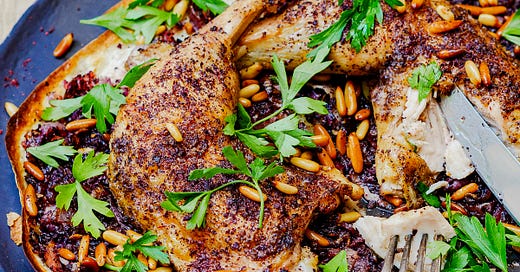



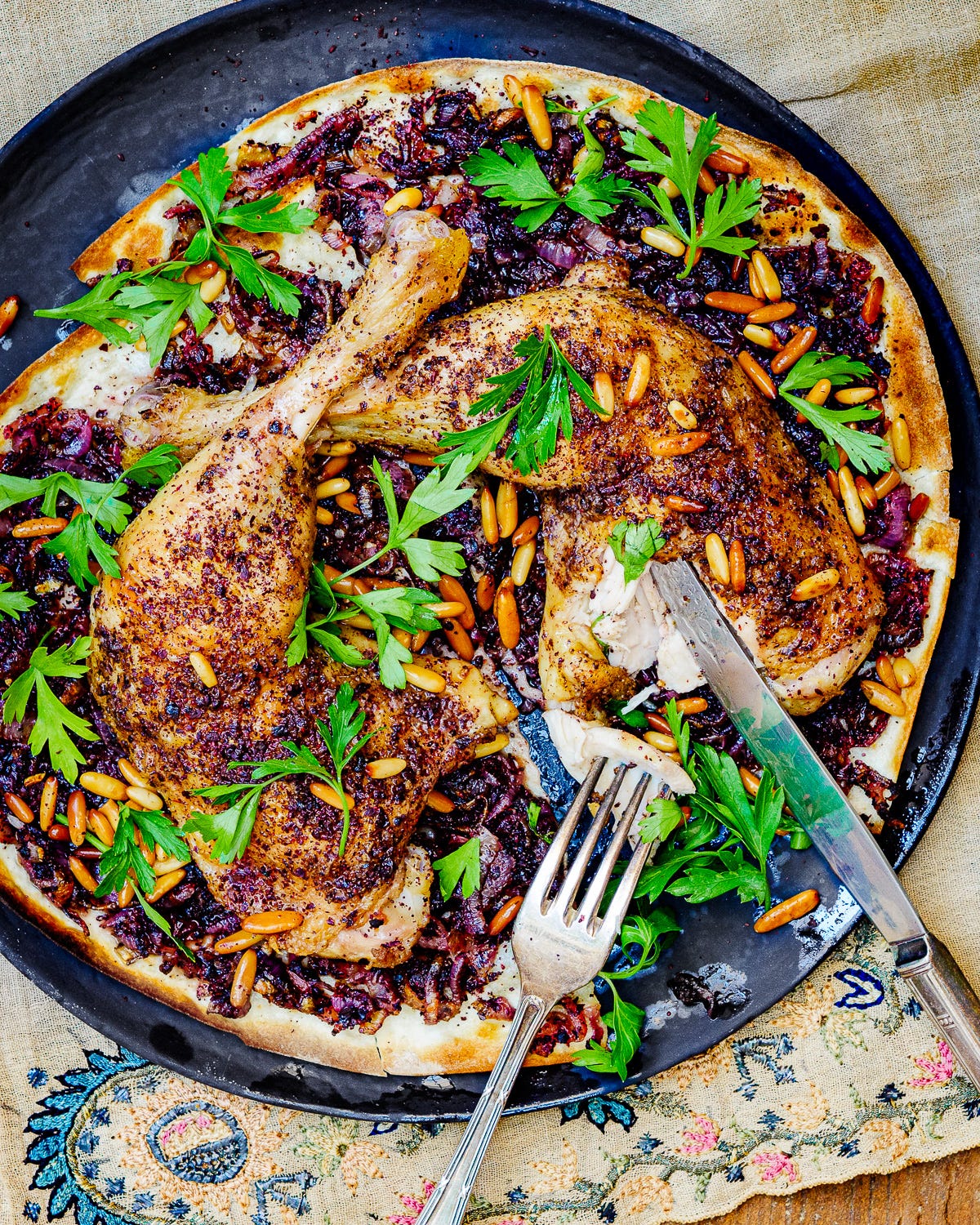
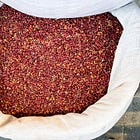
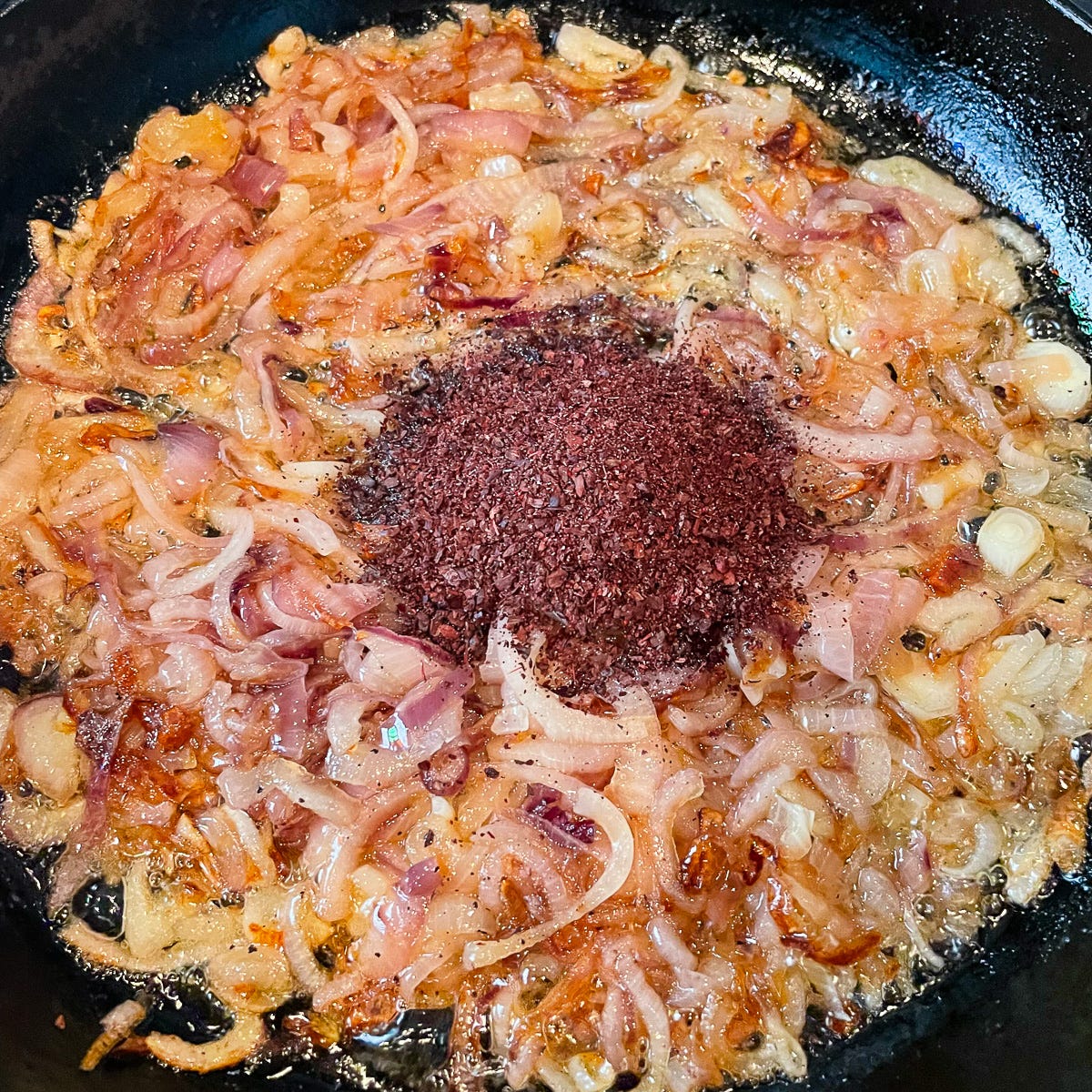
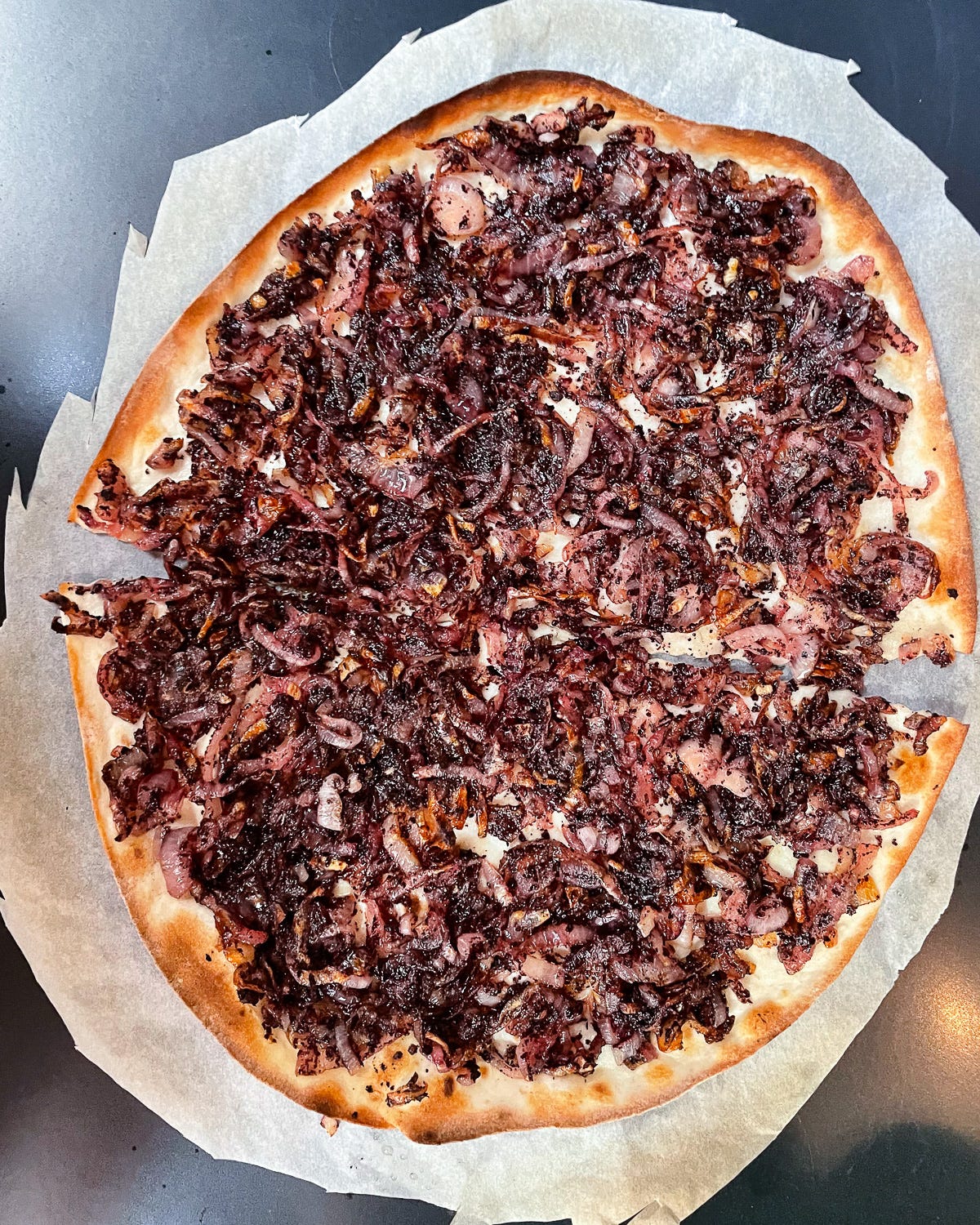


Could I sub za'atar for the sumac?
How is the Sumac processed and used? We have wild Sumac here, but does one use the “berries”, or dried ground berries?